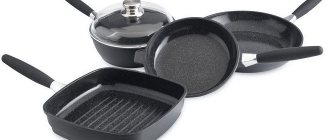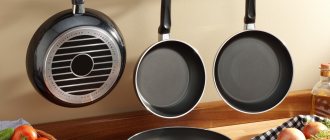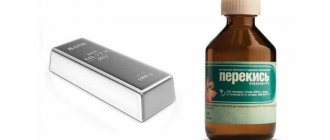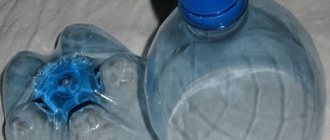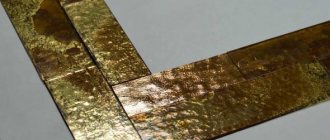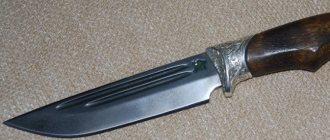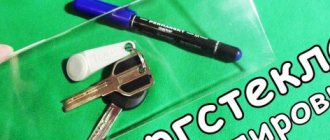I, being a conservative by nature, never chase newfangled trends. I also try to take care of my health and the health of my family. Like many of my friends, I do not use frying pans with a non-stick coating for cooking, as I doubt its safety, but I buy the most budget models.
Of course, we must admit that food often sticks or burns on them. But as they say, there are no hopeless situations. And I found some simple ways to make surfaces coated with a protective layer yourself.
Restore non-stick coating with three ingredients
Place the frying pan on low heat and heat it up a little. Then sprinkle two tablespoons of salt on the surface of the pan. Heat the salt at the bottom of the pan and stir constantly. Thus, it takes us approximately 20-30 minutes. Do not waste time on this process. Remove the pan from the heat and cool.
A little later we pour out all the salt; we no longer need it. Wipe the pan thoroughly with dry napkins or towels without terry cloth so that no lint from the towel remains on it. Pour a spoonful of vegetable oil into the bottom of the frying pan and thoroughly rub the oil with any soft cloth.
Leave the pan in this condition for a day. After the procedure, you need to wash off the oil with water and wipe the pan dry. Now you can use it for a while and the food will not burn.
This procedure should be carried out 2-3 times a month. If you don’t want to do this, you can simply buy a new frying pan at the store. If you want to save a little on your family budget, then use this simple but effective recipe.
“The author’s opinion may not coincide with the editor’s opinion.” You can write a complaint. Especially if it’s clickbait.
Source
I used to buy non-stick frying pans, but now I make them myself: I’m sharing the method
I, being a conservative by nature, never chase newfangled trends. I also try to take care of my health and the health of my family. Like many of my friends, I do not use frying pans with a non-stick coating for cooking, as I doubt its safety, but I buy the most budget models.
Of course, we must admit that food often sticks or burns on them. But as they say, there are no hopeless situations. And I found some simple ways to make surfaces coated with a protective layer yourself.
Interesting things about Teflon
Teflon, in fact, is a cold and heat-resistant plastic with special physical and chemical properties, and is widely used not only for kitchen utensils and utensils.
In Russia it is called fluoroplastic.
The material is patented, and the word “Teflon” itself is registered by the American company DuPont as a trademark.
Teflon glides better than melted ice; thanks to this property, mechanical parts that do not require lubrication are made from it.
Teflon, along with titanium, is biologically very compatible with the human body. Therefore, in ophthalmology, surgery and dentistry it is used to make implants.
Teflon is an excellent protection against insects; they are not able to crawl on vertical surfaces on which this substance is applied.
Method one: using lard
Having bought a new frying pan without a non-stick coating, you need to wash it thoroughly and then put it on the fire to dry out the moisture.
After this, cut off a piece of lard and place it in the frying pan. To ensure that the fat is evenly distributed over the surface, it is good to use tongs and grab the fat with them. This operation must be performed with the heat turned off, but while the pan has not yet cooled down.
After the grease has spread evenly over the entire internal surface, leave the pan in this form for six hours. After this, you need to let it cool and wash it with dish soap.
The importance and stages of preliminary preparation
As mentioned above, the technical oil with which cast iron cookware was coated in production should not get into the food. Therefore, it must be washed off thoroughly. If this is not done, then the prepared dishes may have an unpleasant aftertaste, and there may also be unpleasant consequences for the gastrointestinal tract.
photo by Vicki Vasik
So, the first stage is the removal of the technical oil film.
The second stage is calcination. This process will remove any remaining industrial grease from the pores of cast iron cookware.
The third stage is closing the pores. This process will happen by itself during cooking, the pores will become clogged with fats. However, in order not to wait, you can immediately “seal” the pores with vegetable oil. To do this, sunflower, corn or any other oil needs to be rubbed into the inner surface of the frying pan.
The process of treating a cast iron frying pan before first use is not so labor-intensive, but it will help it maintain its performance characteristics for a long period.
Method two: using canola oil
As in the first case, a thoroughly washed frying pan must be dried over a fire. After that, pour canola oil into it, also known as rapeseed oil. It contains a minimal amount of additives, so its use will be the most optimal option for health. At the same time, it has good lubricating properties.
Once the oil is evenly distributed in the pan, let it sit overnight. On the second day, you can use the dishes for their intended purpose. Thus, an ordinary frying pan turns into a non-stick frying pan with simple manipulations and without any significant costs.
Option three: using coconut oil and salt
To bring it to life you will need:
Place the frying pan on the stove over medium heat. Then add one tablespoon of butter to it and heat it until it melts. Spread the coconut oil evenly throughout the pan and drain off the excess. After this, add a layer of salt to evenly cover the bottom of the vessel.
Take a paper towel and use it to rub the salt and oil into the surface, as if polishing it. After this, you need to take another, clean paper towel. You will need this to get rid of excess coconut oil and salt. When these manipulations are completed, your frying pan is ready for food to be cooked on it without burning.
In conclusion, these methods are not intended for long-term use as non-stick cookware. You should repeat the process when you feel the food starting to stick again.
And when cooking, you will still need to use vegetable or other oil to prevent sticking. However, these are just minor inconveniences in exchange for a clean and safe pan.
Source
Advantages and disadvantages
Cast iron itself has always been heavy in weight, and by this property you can immediately determine what material the frying pan is made of. When cooking food on it, the housewife does some kind of physical exercise, because moving a heavy thing from one side of the stove to the other requires considerable effort. And if you take into account the non-stick coating, the total weight of the cookware will increase significantly.
But many are perplexed: why pay extra money for non-stick coating if cast iron has these excellent properties?
And here knowledge of physics from the school curriculum comes to the rescue: from humid air or dampness, the metal will rust, and in order to start cooking, you will need to spend time cleaning it, calcining it, etc. But which grill pan for an induction cooker is the best and which ones There are reviews about this or that frying pan, this information will help you understand.
The video shows all the pros and cons of using a frying pan:
All this can be avoided if you purchase a frying pan with a protective coating, although you will have to pay a considerable amount of extra money for this pleasure. As a result, you will get rid of the daily painstaking care of capricious utensils.
Most often, manufacturers use Teflon coating as non-stick properties; it has proven itself very well in different ways:
- It does not react to elevated temperatures, and the cooking process becomes convenient - food does not stick to the bottom of the cookware.
- Even when preparing dishes with vinegar or hot sauce, the reaction remains neutral, and you can wash it using your usual alkaline hygiene products.
- Does not cause allergic reactions to food consumers.
For those who want to learn more about a cast iron frying pan, you should follow the link and read the reviews.
There are several limitations to the Teflon surface:
- The optimal layer size should not be less than 20 microns, otherwise the cast iron will be able to absorb moisture over time.
- Strong heating is not allowed, otherwise the layer may crack severely, and chips will threaten the health and hands of the owner.
- Abrasive materials should not be used as a cleaning agent.
- When preparing dishes, you can use either ceramic or wooden spoons for stirring, but any metal is prohibited.
You may also be interested in information about what the Katyusha cast iron frying pan looks like and how it is used, as well as what reviews exist
LiveInternetLiveInternet
—Quote book
How to make a “magic loop” “Magic loop” (or “sliding loop” or “magic ring”).
Program for calculating knitting patterns I can’t help but share my find with you! Prog.
How to start pregnancy pleasantly. One-liners. Natalya Reznik. Natalya Reznik. &.
Danish almond pie with apples I found this wonderful pie yesterday on the &.
—Tags
—Categories
-News
—Search by diary
—Subscription by e-mail
—Interests
-Friends
—Communities
-Statistics
HOW TO MAKE CAST IRON COOK NON-STICK.
how cast iron cookware can be easily made non-stick, “Teflon”
You will need to do the following:
1. clean the dishes from soot (an old layer of burnt food and burnt fat) or from factory paint/oil if the cast iron cookware is new; 2. clean the dishes from rust;
NATURAL COLOR OF CAST IRON COLOR AFTER 1-2 LAYERS OF OIL
cleaning cast iron from carbon deposits/factory oil
Rust removal
There are several edible drying oils you can find in grocery stores: flaxseed, poppy seed, walnut, and tung nut (tung) oil. Any of them will create a beautiful smooth black coating on the surface of the cast iron, and if you apply more than 5 layers, it will also be shiny. And if the frying pan is smooth, and you apply 20 layers, then in the bottom of the frying pan you can look at yourself as if in a black mirror.
After the cast iron has been heated to absolute dryness for an hour at a temperature of 200-250C, it is removed and greased with a drop of drying oil on the grate. If the cast iron is very smooth, then a drop will be enough for a whole frying pan.
Only if the handle has intricate parts and grooves, it will be possible to apply more oil there with the tip of a rag or a brush made of natural bristles (the frying pan is hot, you cannot use a synthetic brush).
It is extremely important to apply the oil in a thin layer so that the cast iron is almost dry and shiny. If you oil cast iron so that it looks “wet”, it will dry out in patches and then may “peel” In fact, several thin layers of oil are better than several thick ones! Therefore, we wipe the excess dry before calcining the freshly applied layer.
Then you need to put the oiled cast iron in a hot oven and calcinate it at the maximum temperature, which for household ovens is about 250C.
The duration of calcination depends on the oil used. For example, tung oil polymerizes in 30 minutes, but linseed oil needs to be calcined longer: 1 hour, then turn off the oven and leave to dry for two hours at a decreasing temperature.
Source
The process of restoring a cast iron frying pan
It is very difficult to remove many years of greasy deposits on a frying pan mechanically. It is best to build a fire under it and roast it well in the flame.
The deposits will burn off, and as a result, pure metal will remain, with which you can continue to work. It is important not to allow the pan to cool quickly after firing. It is best to leave it in the coals until completely cooled.
The cooled frying pan is soaked overnight in a soapy solution.
The next day, it must be scraped out with a metal scraper and dishwashing detergent.
It is then placed on the stove and heated to quickly evaporate the moisture.
If it dries naturally, it will become very rusty.
Rub linseed or hemp oil into a dry and cooled frying pan after drying on the stove.
It is better to do this with a bin to simultaneously remove a light coating of rust. You need to rub it on all sides. The oil is applied in a thin layer. It will take no more than a teaspoon.
The grated frying pan is placed in an oven heated to 250 degrees Celsius for 1 hour.
The oil will evaporate, leaving a thin protective film similar to Teflon.
After an hour, the frying pan is removed and left to cool, after which it is rubbed with a second layer of oil. This needs to be repeated 5-7 times. The more layers you make, the more stable the surface you will get. Starting from the second layer, it is better to rub in the oil with a rag rather than a bandage, as rust will no longer appear. The advantage of the fabric is that it does not leave threads in the pan.
Non-stick cookware
Today there are different coatings that prevent food from burning. These are Teflon, marble, ceramics and titanium. They make cooking quick and hassle-free.
When using cookware with a non-stick top layer, it is necessary to take into account the recommendations for caring for the product so that it lasts longer and does not harm the health of family members.
Teflon pans are easy to use. There is no need to oil them while cooking. But when heated, they can release harmful substances. Caring for a frying pan with a non-stick Teflon coating should be thorough:
Advantages of cast iron
The biggest benefit of cast iron cookware is its versatility. Non-stick frying pans smoke nervously on the sidelines when a time-tested cast iron appears on the stove, in which you can perfectly fry steak, fish or scrambled eggs. Uneven heating, which everyone who cooked on a gas stove has encountered in one way or another, is not scary with a cast iron frying pan. That's because the thick walls of cast iron distribute heat evenly, enveloping your food in a gentle heat that will make even the toughest meat release its juices.
What you need to do to prevent a non-stick frying pan from burning
To prevent any pan from burning, you must adhere to the following rules:
If a frying pan burns, you need to pay attention to its material. Aluminum or cast iron can be revived without much expense. They have a porous surface that wears off over time.
First, the dishes need to be washed well. Baking soda will help with this. It is poured into a container with water and the pan is boiled in the solution for some time. Afterwards, the liquid is drained and its remains are disposed of.
After thoroughly rinsing off the soda solution, sprinkle coarse kitchen salt onto the bottom of the dish and place on the fire. You can use the oven. The frying pan is heated for 20-30 minutes, after which it is set aside to cool. When all the salt has been removed, the surface is greased with vegetable oil.
Another simple method is to fry the bread on the surface that has become unusable. The bread absorbs food residues and dirt that have formed during the operation of the product.
Enameled cookware should not be heated. It needs to be cleaned, dried with a towel, and generously rubbed with lard or other fat. For a high-quality result, the procedure is repeated before each use of the dishes.
To prevent food from burning in a frying pan with a ceramic top layer, it is recommended to follow the operating instructions for such products:
To avoid premature destruction of a non-stick frying pan, as a preventative measure, it is recommended to pour water into the container, completely filling the space, and boil for 10-12 minutes. After this, get rid of the liquid, grease the bottom and walls of the frying pan or saucepan with oil. This will help extend shelf life and avoid damage.
There are times when food only burns in the middle. The reason is uneven distribution of fire and, accordingly, non-uniform heating of the bottom.
Teflon substitute for making pancakes and omelettes
An excellent coating for cooking pancakes is Teflon. Food in such a frying pan does not burn and quickly lags behind the surface. If there is no Teflon layer or it needs to be replaced on the dishes, you can apply the coating yourself.
Cast iron frying pans are still found in homes. Their main drawback is weight. They are too heavy, so they are inconvenient when preparing pancakes and omelettes.
Aluminum containers with ceramic coating are lighter. They have a protective layer that prevents food from burning. For a frying pan to work for a long time, it needs proper and careful care. If damage occurs, then restoring the non-stick ceramic coating is impossible and you need to look for a new option.
Steel cookware with a non-stick coating is practical. It is durable and does not react chemically with food, so it does not affect the taste of the food. To prevent pancakes from sticking, the product must be clean and have a thick bottom.
What foods can be cooked in a cast iron frying pan?
Unlike stainless steel and ceramic surfaces, cast iron alloy is a porous material. With proper care, the oil forms a natural non-stick protection on the surface. Thanks to it, a crispy, dried crust forms on the products.
It's great to cook in a cast iron frying pan:
- French fries;
- Products in batter;
- Fried pies;
- Steaks from fish, meat;
- Chicken tobacco;
- Pancakes and pancakes;
- Scrambled eggs;
- Much more with a golden brown crust.
It is important to remember that if you constantly take care of a cast iron frying pan, it will last for several generations, and you can fry whatever you want on it.
Making a Teflon coating for a frying pan with your own hands
If the Teflon frying pan begins to burn, this indicates damage to the protective layer or its poor quality. It is impossible to completely restore the original properties of the coating, but you can try to correct the situation at home. To do this, boil a mixture of water, laundry soap and a small amount of vinegar in a frying pan for 15 minutes.
After draining the solution, the dishes should be rinsed, gently rubbed with a soft sponge and dried. Grease the prepared surface with oil and start frying. If the procedure does not work, it is worth applying a Teflon coating, which will be done efficiently and quickly by specialists.
Non-stick coating restoration workshops
Restoring Teflon coatings has recently become possible. Workshops are opening that specialize in high-quality replacement of non-stick coatings. They have special equipment with which they apply a new layer of polymer. The companies guarantee that the dishes will be returned to their original appearance and functionality. The service is not cheap, so sometimes it is more profitable to buy a new frying pan.
It does not matter what material the kitchen products are made of if care is neglected. It is necessary to use the utensils correctly and carefully and periodically carry out preventive measures to extend their shelf life.
What can you cook in a cast iron frying pan?
Dishes made from this material are highly durable. Its shelf life, if used correctly, can be measured in decades. Cast iron weighs a lot, but will ultimately last a long time.
Strong, durable, it sometimes presents unpleasant surprises.
You can cook any dish in such a frying pan. When heated well, pancakes and pancakes are perfectly baked on it. Meat food is also easily prepared using a cast iron frying pan. You can fry vegetables, mushrooms and roast seeds on it.
Why does the frying pan burn?
Cooking can become very difficult if the pan burns. What should you do when the potatoes burn and stick to the bottom, you can’t get the scrambled eggs off the frying pan, and you end up with ugly lumps instead of pancakes? This problem can most often be dealt with, but the solution will vary depending on the material from which the pan is made.
Let's look at ways to clean the surface and restore the non-stick coating for different types of frying pans and pots.
If your cast iron skillet burns
What to do in this case? A cast iron frying pan is made of porous materials. The oil enters the pores and creates a natural non-stick coating. Violation of this coating leads to burning. To avoid this and restore the protective coating, you need to perform the following treatment:
You must act carefully when using oven mitts. The temperature of cast iron after calcination is very high. But if, despite the preparation, everything sticks to the pan. What to do in this case? You can heat the pan again. First you need to wash it thoroughly and clean the burnt layer. Then wipe and rub with sunflower oil inside and out and, removing excess oil, place in the oven with the bottom up. It needs to be heated for about an hour at a temperature of 180°. After cooling, the dishes can be removed from the oven. This procedure will have to be repeated from time to time to restore the non-stick layer.
To clean a cast-iron frying pan from burnt-on food debris, you can boil it with soda. After this, the carbon deposits will be easily washed off .
Aluminum and enamel cookware
Aluminum is also porous, so it needs the same care as cast iron.
Aluminum cookware also needs to be heated with salt. Another way to restore the coating of the pan is to fry diced bread in it without butter. When frying, the bread will absorb all the remains of burnt food. Housewives consider this method effective. Aluminum is a light and strong metal, but it has many disadvantages. One of the main ones is the ability to react with some acidic and alkaline foods. In this case, the metal can enter food. Therefore, the use of aluminum without a special coating is undesirable.
Enameled coating also has a porous structure , but products with enamel cannot be calcined. Therefore, to restore the coverage you need:
It is advisable to perform this procedure before each use of the cookware.
Stainless steel frying pan
Over time, microcracks and scratches form on the metal surface. To avoid burning, you need to grease the stainless steel frying pan with oil. Fat fills cavities, creates an even coating and prevents sticking. Handle a stainless steel frying pan with care, try not to scratch it, use a silicone or wooden spatula.
To avoid damaging stainless steel and cast iron cookware, you must follow these rules:
Methods for heating a frying pan from sticking
This method of cleaning the surface of kitchen utensils allows you to rid them of unpleasant odors. After this treatment, food stops burning and sticking to the cast iron product.
Firing on the stove or in the oven
A cast iron frying pan burns - what to do in this case? Firing on the stove or in the oven is done after cleaning the inside of the pot. If there is burnt food on its walls, wash the frying pan several times under running water.
Normal calcination of a cast iron frying pan.
There is no particular difference between firing on the stove or in the oven. It all depends on the degree of contamination of kitchen utensils. In the oven, firing is carried out in a more delicate way than over direct fire. For this treatment, soda is usually used, which is boiled in water for 5 minutes.
If a cast iron frying pan burns, experienced housewives know what to do: cast iron needs to be calcined.
Dry firing of cast iron products is possible. It is produced after purchasing a new frying pan. Calcination lasts at least 10 minutes, after which the dishes can be used.
Burning with salt
A simple firing method is carried out in stages.
- Choice of salt. Coarsely ground substances are not suitable for tempering a frying pan. The use of fine salt in this case is encouraged. Its layer should completely cover the bottom of the cast iron cookware.
- Calcination. The process will take about an hour if you keep the pan on low heat. The salt should be stirred periodically for greater effect of heat treatment of the walls of the dishes.
- Trituration. After the kitchen utensils have completely cooled, they need to be further processed. The calcined salt must be thoroughly rubbed over the entire inside of the pan. To do this you will need a soft cloth or napkin.
For the procedure, coarse salt is used; it is more convenient to work with.
After burning with salt, utensils cannot be washed for two days. After the term is announced, the pan is rinsed in cold water.
Oil Quenching
There are several methods of such processing that will help prevent food from burning. The most effective of them looks like this.
- Rubbing with fat. It is better to use a piece of lard or vegetable oil. This remedy will help if you then place the pan in the oven.
- Heat treatment. Place cast iron cookware on a wire rack or baking sheet. Quenching with oil should last no more than an hour at a temperature of 100 – 150 ºC.
- Cleansing. The oil should be removed after processing. In this case, it is best to wipe the walls of the kitchen utensils with a napkin.
- Cooling down. After heat treatment, the pan should be placed in a cool place. You cannot wash it for three days after hardening with oil.
The surface is perfectly restored by oil firing.
